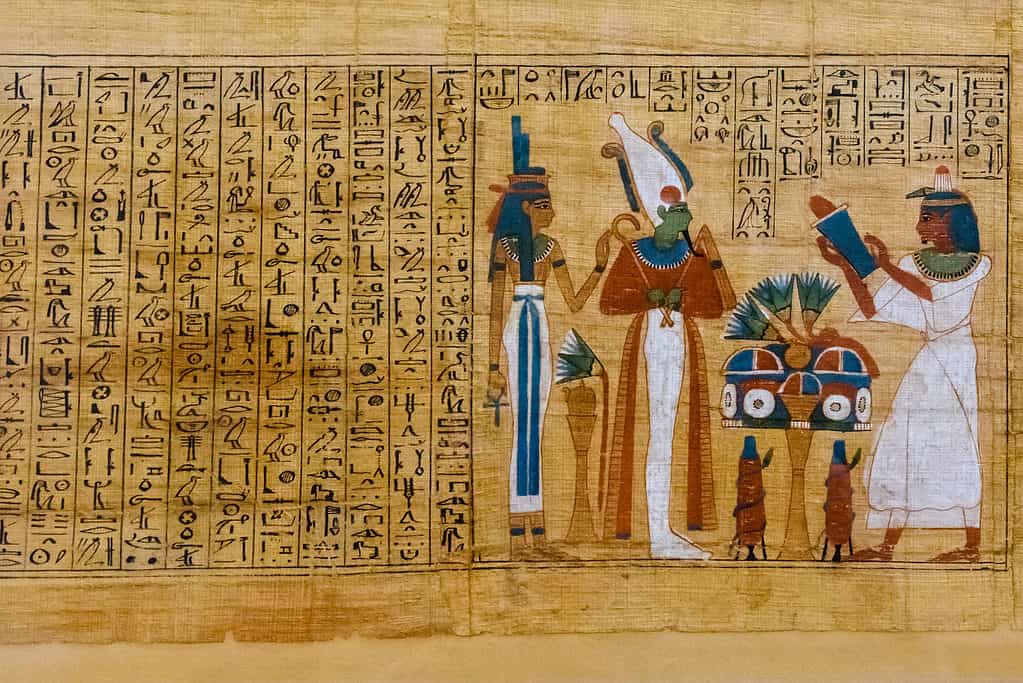
Discover which animals are sacred to Ancient Egypt’s most prominent deities.
©Ihor Bondarenko/Shutterstock.com
Relation Between Animals and Ancient Egyptian Deities
While animals were often associated with Ancient Egyptian gods and goddesses, they were not worshipped independently. Animals served as symbols of certain deities, and some deities possessed more than one symbolic animal. Additionally, Ancient Egyptians believed that gods could occupy the body of an animal, making the animal an incarnation of a deity. Therefore, many animals were considered sacred to specific gods, either serving as the embodiment of a god or a sacrifice to a god.
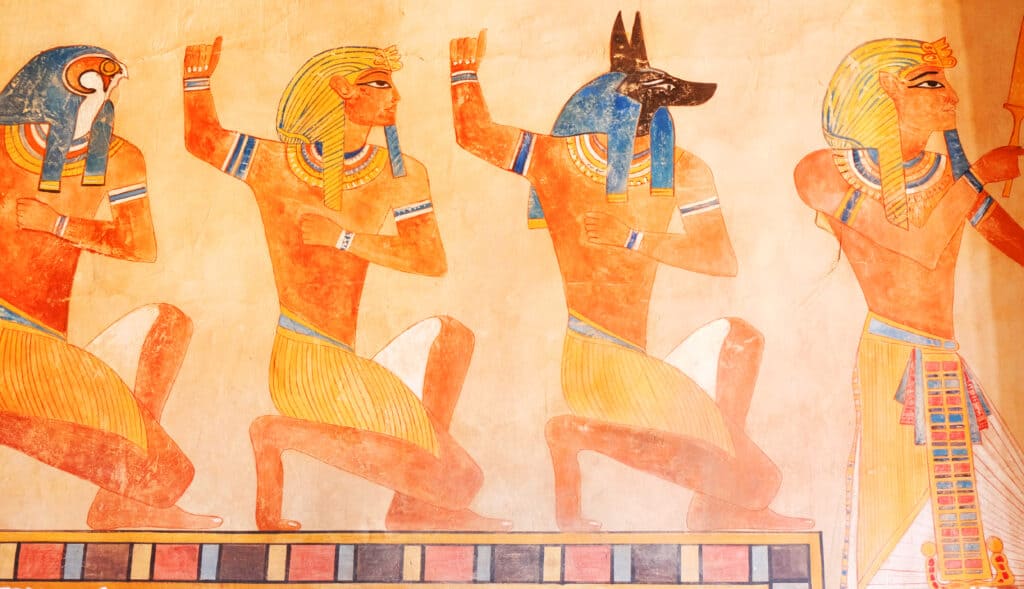
Ancient Egyptians believed that their gods and goddesses could inhabit the bodies of animals on Earth.
©Vixit/Shutterstock.com
6 Animals Associated with Ancient Egyptian Deities
Below, we describe six animals sacred to Ancient Egyptian deities, including information on ancient texts and the themes associated with each god and goddess.
1. Baboon
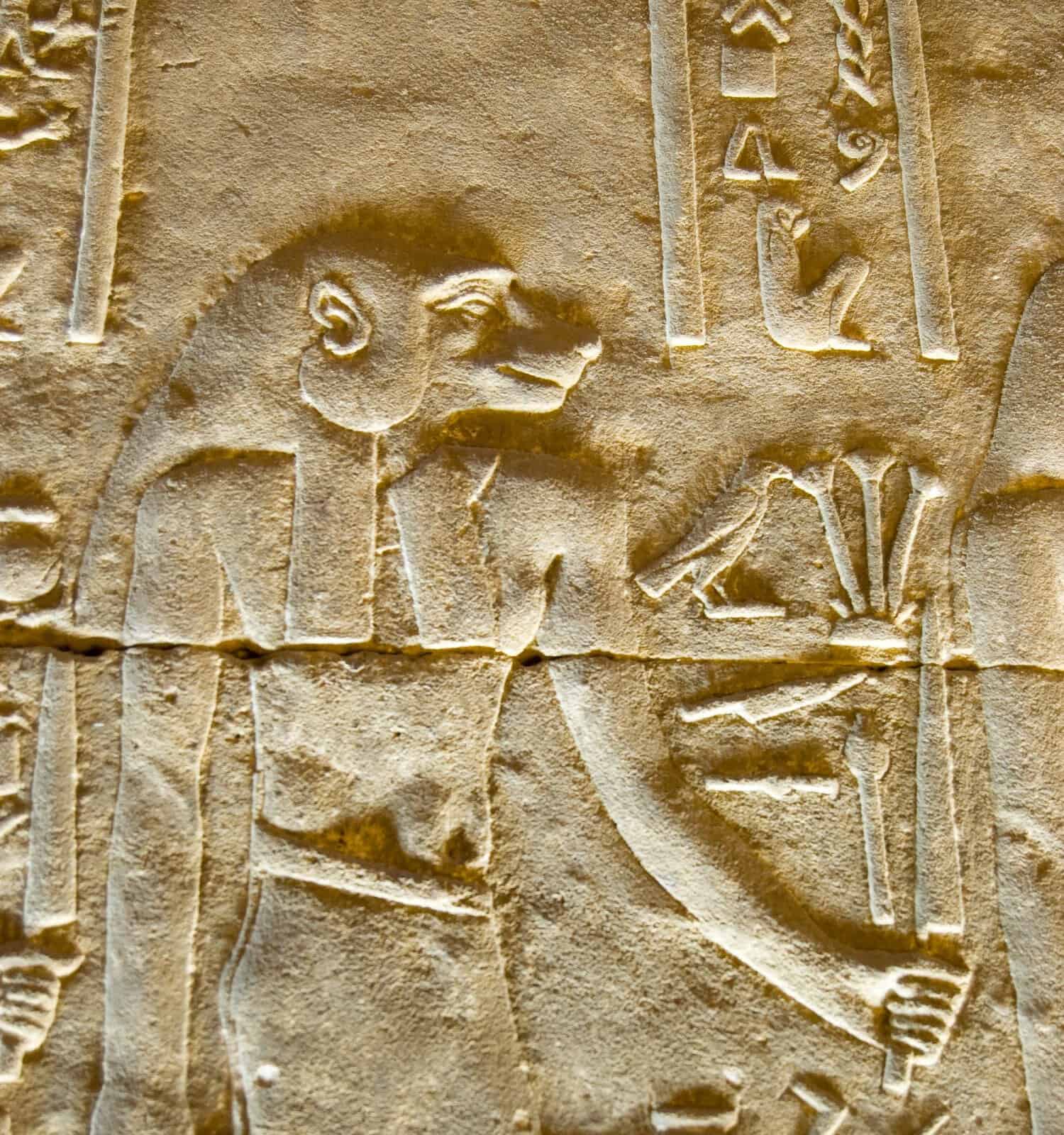
Both Hapi and Thoth could occupy the body of a baboon.
©BasPhoto/Shutterstock.com
Baboons are associated with the deities Thoth and Hapi. Thoth was the Ancient Egyptian god of magic, writing, and wisdom. While Thoth could inhabit the body of a baboon, he could also possess the head of an ibis. Additionally, Thoth represented justice and order, which he utilized to solve problems and disagreements among the Egyptian gods.
Hapi was the god of the yearly flooding of the Nile River, representing the fertility of the Earth and prosperity. Like Thoth, Hapi was associated with the baboon. Generally, depictions of Hapi show the deity with the head of a baboon. Another interesting fact about this god is that Hapi was considered a god of the underworld, in charge of protecting the lungs of deceased humans.
2. Cat
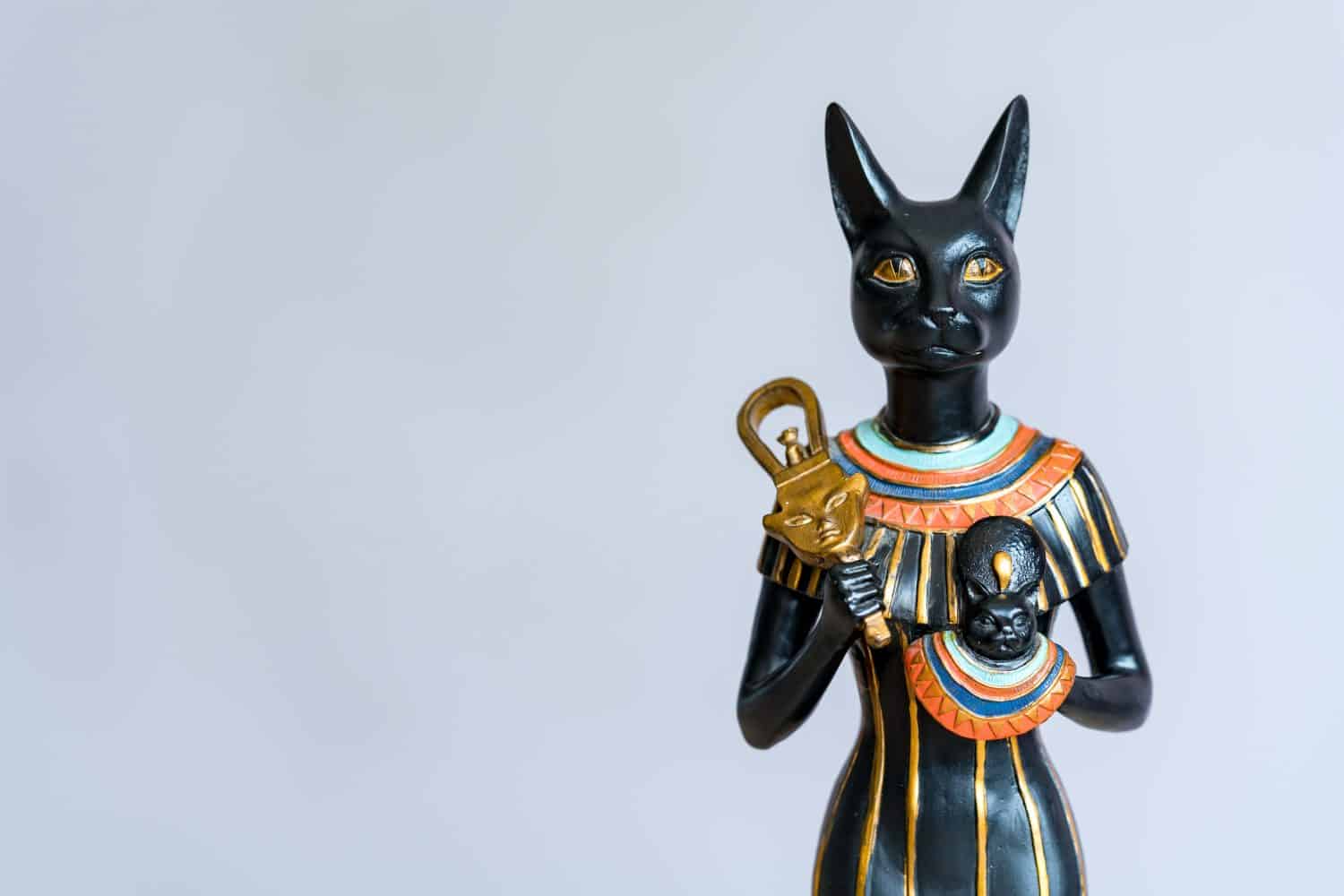
Bastet represented protection, pleasure, and good health.
©QBR/Shutterstock.com
Bastet was the Egyptian goddess most associated with the cat. In Ancient Egypt, cats served as important religious and agricultural symbols. Cats protected crops and killed rodents, which helped mitigate the spread of disease. Many Egyptians believed that Bastet could inhabit the body of a cat, and the goddess was often portrayed with the head of a cat and the body of a female human. Bastet symbolized pleasure, good health, and protection in Ancient Egyptian society.
3. Crocodile

The crocodile features of Sobek make him a terrifying Egyptian deity.
©Shamrock_Media/Shutterstock.com
Sobek was the god of the crocodiles and was appropriately depicted with the head of a crocodile in many portraits. Sobek remains one of the oldest Egyptian gods discovered, according to ancient texts. Some Egyptians believed that Sobek created the Nile River, where crocodiles are most abundant. Themes associated with Sobek include fertility and chaos.
4. Frog
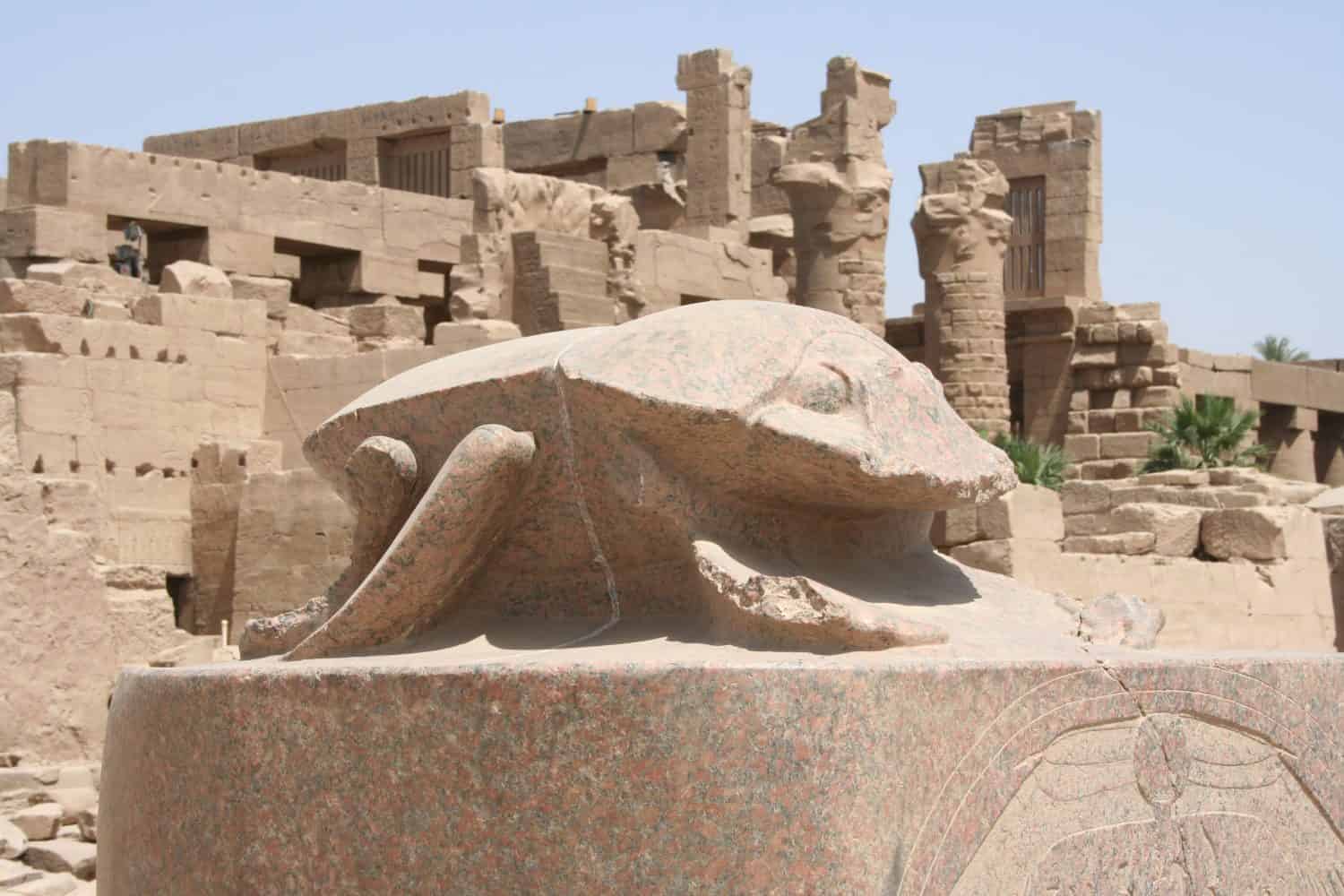
Male deities of the Ogdoad generally possessed the head of a frog.
©Robirensi/Shutterstock.com
The frog appears alongside several Egyptian deities, including Nun, Kek, and Amun. These three deities belonged to the Ogdoad, which describes a group of eight primordial Egyptian deities. Four deities in the Ogdoad were male and had female counterparts. Kek, Nun, and Amun were all male deities that possessed the head of a frog. In Ancient Egyptian mythology, Nun was the god of dark and turbulent waters, Kek was the god of darkness and night, and Amun was the god of the air. On the other hand, one female goddess also possessed the head of a frog: Heket. Heket was the Ancient Egyptian goddess of birth and fertility.
5. Snake
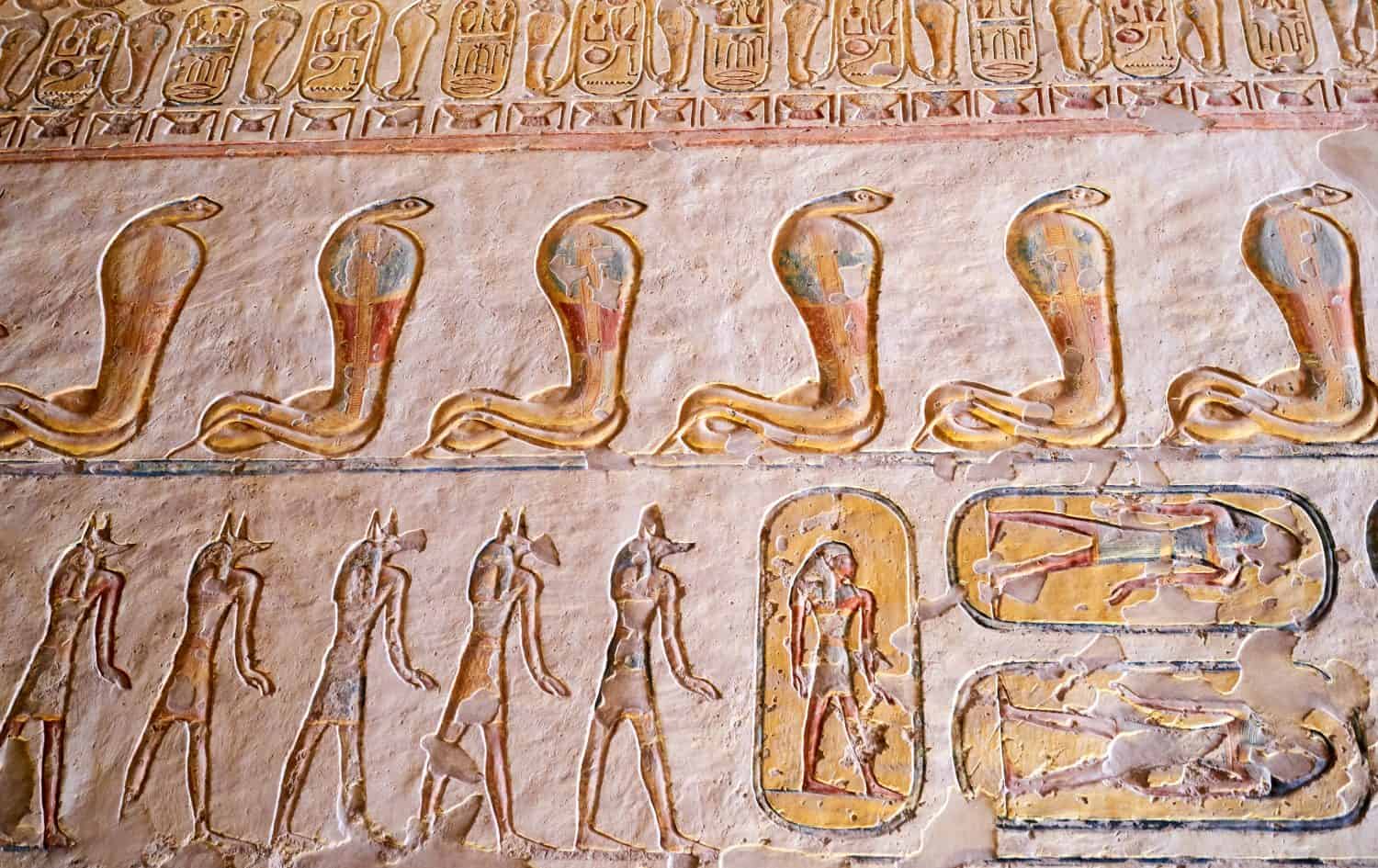
Buto, or Wadjet, was the goddess of snakes and usually displayed the features of a cobra.
©Azadeh Lund/Shutterstock.com
In the Ogdoad, the female partners of the male deities possessed the heads of serpents or snakes. While most believe the female Ogdoad members included goddesses like Naunet and Amunet, this grouping of Egyptian deities has been subject to change. Nevertheless, most contend that females belonging to the Ogdoad all displayed the heads of snakes in early texts. However, one goddess represented all snakes. Buto, also known as Wadjet, was the goddess of serpents and possessed the features of a cobra.
6. Lioness
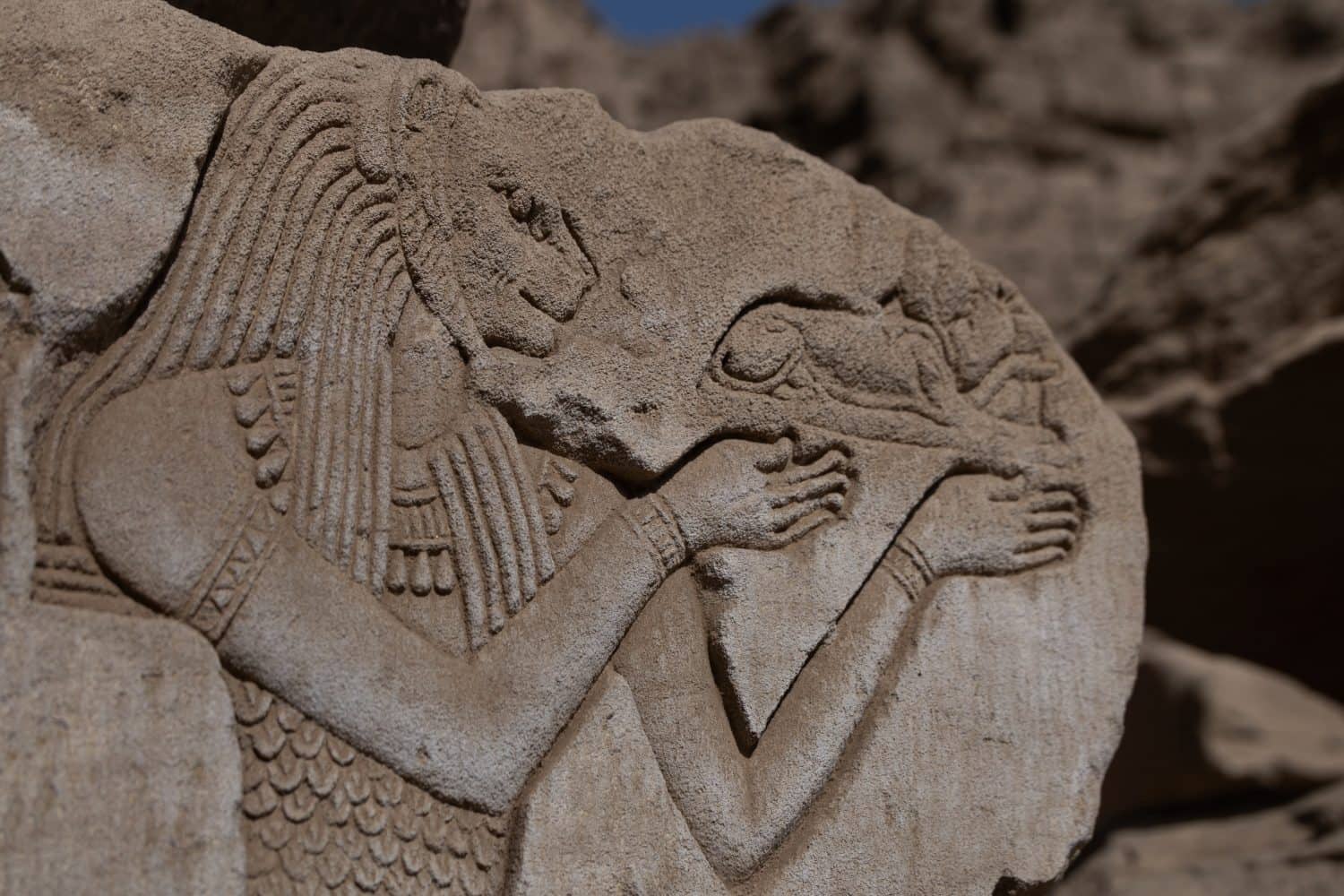
Sekhmet possessed the head of a lioness and represented chaos, plague, war, healing, and the desert sun.
©hemro/Shutterstock.com
The lioness is associated with Sekhmet, Tefnut, Mut, and Astarte. Sekhmet possessed the head of a lioness and the body of a woman. As the goddess of healing, war, plague, the desert sun, and chaos, Sekhmet was an extremely powerful figure, deserving of a powerful symbolic animal like the lioness. Like Sekhmet, Tefnut also was portrayed with the body of a woman and the head of a lioness. Tefnut was the goddess of moisture, rain, and dew.
While the goddess Mut was typically depicted as a human woman, she occasionally possessed the head of a lioness. This feature was especially prominent when Mut was associated with other Egyptian deities, such as Sekhmet and Bastet. Furthermore, Mut was the goddess of the sky and the mother goddess, as she gave birth to all creation with Amun-Ra. Finally, Astarte was the goddess of love and war, and she was often associated with lions as well as bees and doves.
The photo featured at the top of this post is © iStock.com/WHPics
Discover the "Monster" Snake 5X Bigger than an Anaconda
Every day A-Z Animals sends out some of the most incredible facts in the world from our free newsletter. Want to discover the 10 most beautiful snakes in the world, a "snake island" where you're never more than 3 feet from danger, or a "monster" snake 5X larger than an anaconda? Then sign up right now and you'll start receiving our daily newsletter absolutely free.
Thank you for reading! Have some feedback for us? Contact the AZ Animals editorial team.






